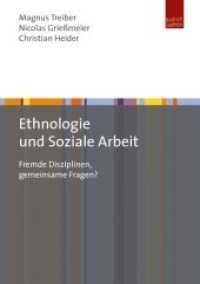Full Description
From Text to Political Positions addresses cross-disciplinary innovation in political text analysis for party positioning. Drawing on political science, computational methods and discourse analysis, it presents a diverse collection of analytical models including pure quantitative and qualitative approaches. By bringing together the prevailing text-analysis methods from each discipline the volume aims to alert researchers to new and exciting possibilities of text analyses across their own disciplinary boundary.
The volume builds on the fact that each of the disciplines has a common interest in extracting information from political texts. The focus on political texts thus facilitates interdisciplinary cross-overs. The volume also includes chapters combining methods as examples of cross-disciplinary endeavours. These chapters present an open discussion of the constraints and (dis)advantages of either quantitative or qualitative methods when evaluating the possibilities of combining analytic tools.
Contents
1. Foreword (by Kaal, Bertie); 2. Positions of Parties and Political Cleavages between Parties in Texts (by Kleinnijenhuis, Jan); 3. PART I. Computational Methods for Political Text Analysis; 4. PART I: Introduction (by Vossen, Piek); 5. Comparing the Position of Canadian Political Parties using French and English Manifestos as Textual Data (by Collette, Benoit); 6. Leveraging Textual Sentiment Analysis with Social Network Modelling: Sentiment Analysis of Political Blogs in the 2008 U.S. Presidential Election (by Gryc, Wojciech); 7. Issue Framing and Language Use in the Swedish Blogosphere: Changing Notions of the Outsider Concept (by Dahlberg, Stefan); 8. Text to Ideology or Text to Party Status? (by Hirst, Graeme); 9. Sentiment Analysis in Parliamentary Proceedings (by Grijzenhout, Steven); 10. The Qualitative Analysis of Political Documents (by Wesley, Jared J.); 11. PART II. From Text to Political Positions via Discourse Analysis; 12. PART II: Introduction (by Koller, Veronika); 13. The Potential of Narrative Strategies in the Discursive Construction of Hegemonic Positions and Social Change (by Montesano Montessori, Nicolina); 14. Christians, Feminists, Liberals, Socialists, Workers and Employers: The Emergence of an Unusual Discourse Coalition (by Eleveld, Anja); 15. Between Union and a United Ireland: Shifting Positions in Northern Ireland's Post-Agreement Political Discourse (by Filardo-Llamas, Laura); 16. Systematic Stylistic Analysis: The Use of a Linguistic Checklist (by Leeuwen, Maarten van); 17. Participation and recontextualisation in New Media: Political Discourse Analysis and YouTube (by Boyd, Michael S.); 18. PART III. Converging methods; 19. PART III: Introduction (by Cienki, Alan); 20. From Text to the Construction of Political Party Landscapes: A Hybrid Methodology Developed for Voting Advice Applications (by Krouwel, Andre); 21. From Text to Political Positions: The Convergence of Political, Linguistic and Discourse Analysis (by Elfrinkhof, Annemarie van); 22. About the authors; 23. Index








